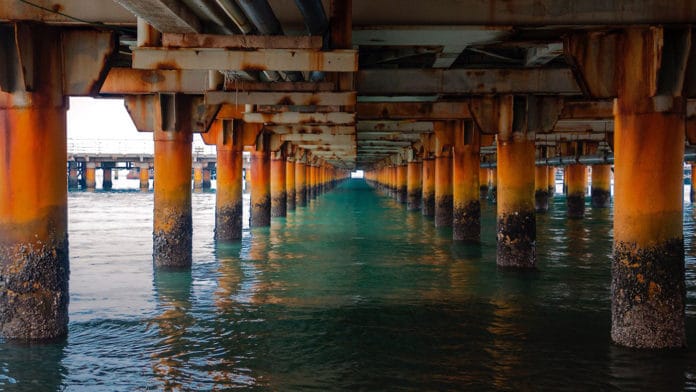Until now, we have seen a number of ways to generate electricity and now ‘rust’ has joined the line.
The team of scientist at Caltech and Northwestern University shows that electricity can be produced when saltwater flows over the top of thin films of rust. These films represent an entirely new way of generating electricity and can be used to develop new forms of sustainable energy production.
Saltwater is commonly used in batteries (act as an electrolyte) to generate electricity. However, the new system works on a different principle. It does not involves chemical reactions, but rather converts the kinetic energy of flowing saltwater into electricity.
Basically, it works like this – the ions present in saltwater attract electrons in the iron beneath the layer of rust. As the saltwater and its ions flow, that attractive force drags the electrons in the iron along with them, generating an electrical current.
The similar phenomenon has been previously seen using graphene instead of iron and rust, but the problem there is that graphene is still tricky to manufacture and scale them up to usable sizes. Whereas, the iron oxide films – discovered by Tom Miller, Caltech professor of chemistry, and Franz Geiger, Dow Professor of Chemistry at Northwestern – are relatively easy to produce and scalable to larger sizes.
Rust will form on iron alloys on its own, but to make sure the rust forms in even, the team used a process called physical vapor deposition (PVD). It turns normally solid materials, into a vapor that condenses on the desired surface. PVD allowed them to create an iron oxide layer 10 nanometers thick, about 10 thousand times thinner than a human hair.
The team, then tested it out using saltwater solutions of varying concentrations over it. They found that their technique was around 30% efficient at converting kinetic energy into electricity. Besides, it was able to generate several tens of millivolts and several microamps per square centimeter of the rust coated iron.
“For perspective, plates having an area of 10 square meters each would generate a few kilowatts per hour—enough for a standard US home,” Miller says. “Of course, less demanding applications, including low-power devices in remote locations, are more promising in the near term.”
This effect could be useful in specific scenarios where there are moving saline solutions, like in the ocean or the human body, according to scientists.
“For example, tidal energy, or things bobbing in the ocean, like buoys, could be used for passive electrical energy conversion,” he says. “You have saltwater flowing in your veins in periodic pulses. That could be used to generate electricity for powering implants.”
The paper describing their findings appears in the journal Proceedings of the National Academy of Sciences.
